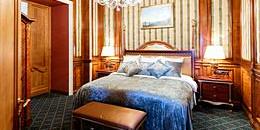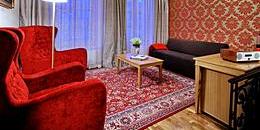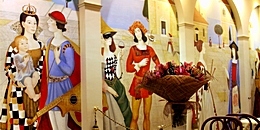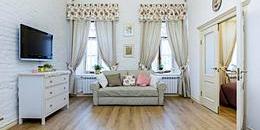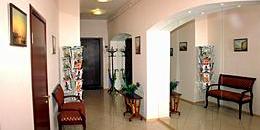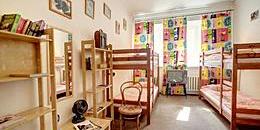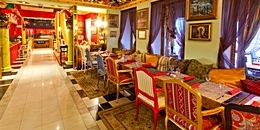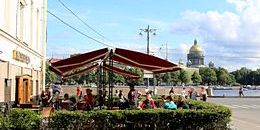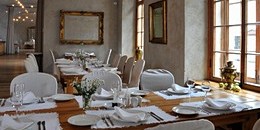Menshikov Palace
The palace of Prince Menshikov was the first large stone building erected in St. Petersburg, and is also the only private city structure to have survived from the beginning of the 18th century. As part of the State Hermitage, it is now used to display some of the museum's vast collection of European and Russian applied art from the early 18th century, as well as contemporaneous sculptures and paintings, all of which blend harmoniously with the beautifully restored interiors.
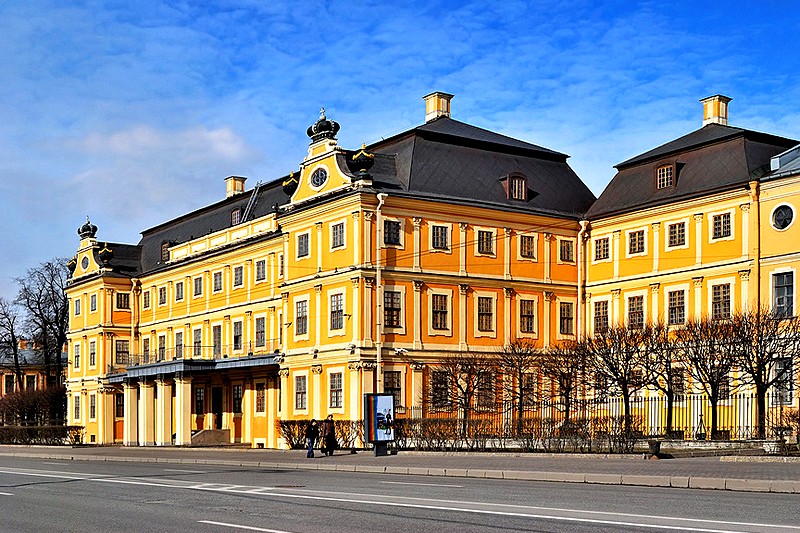
The owner of the palace, Alexander Menshikov, built an extraordinary career in the court of Peter the Great. Not of noble birth, he became the young Tsar's closest companion, was given the title of "Serene Highness", became governor of the province of Ingermanlandia, and earned the rank of General Field Marshall. He shared his benefactor's vision for the modernization of Russia, but he was also infamous for his greed and corruption, traits which eventually lead to his downfall at the hands of the old nobility.
In 1703, Peter the Great gave his favorite a plot of land on the banks of the Neva on Vasilevskiy Island. A wooden house was quickly built, and soon replaced by a three-storey stone building. The surrounding garden was decorated with statues and fountains, and on the embankment in front of the main entrance a jetty was built to receive guests arriving by boat.
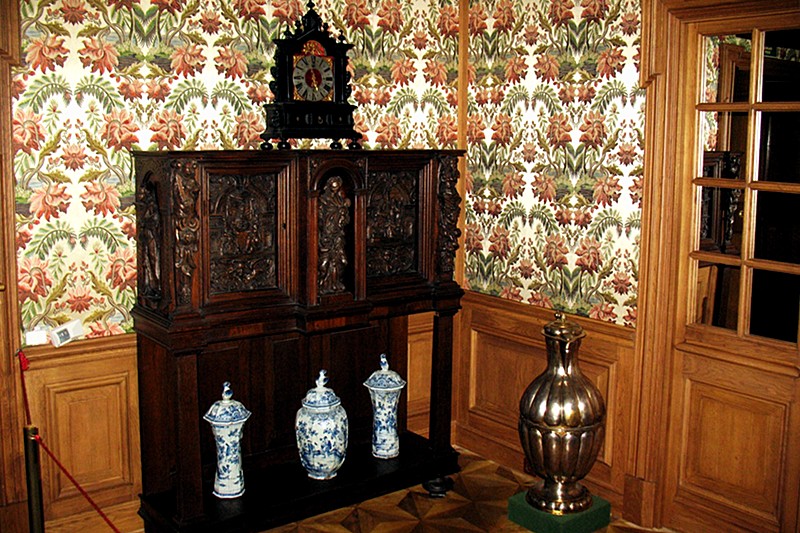
The Russian Emperor used the home of his comrade on the most formal occasions, as the palace was the largest and most magnificent structure in St. Petersburg at the time. In the first quarter of the 18th century, the Palace became the centre of political, cultural and social life in the new city. Here the ambassadors of foreign powers were met, the etiquette of the imperial court was established, and the first balls and carnivals in St. Petersburg were held.
The most striking feature of Menshikov's mansion is the unusual mixture of palatial pageantry and domestic appointments. The walls of the rich interiors are liberally dressed with marble, and the floors are covered with expensive glued-laminated parquet. The interiors have preserved to this day the design traditions of that era. For example, here you can see whole rooms entirely covered with Dutch (delft) tiles. The exhibits on display in the museum today are devoted to the history of Russian culture at the beginning of the 18th century. The collection includes rare works of art of the 17th and 18th centuries: sculpture, paintings, engravings, furniture and other objects, including Menshikov's own belongings.
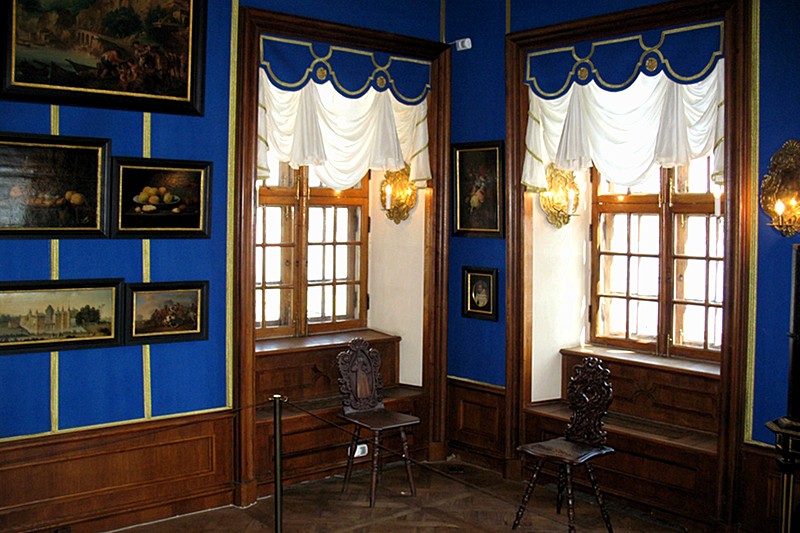
After the death of Peter's wife, Empress Catherine I, Mesnshikov fell from grace and was exiled with all his family to Berezov in Siberia. All his property was seized by the state, and his palace became home to the First Cadet Corps, the most prestigious high school in Russia.
The first stone building of the new Russian capital was built between 1710 and 1727 to plans by the architects Ludwig Fontana, Shedel and Jean-Baptiste Leblond. The result combines Western European baroque with features of traditional Russian architecture, earning the style the title of "Petrine Baroque".
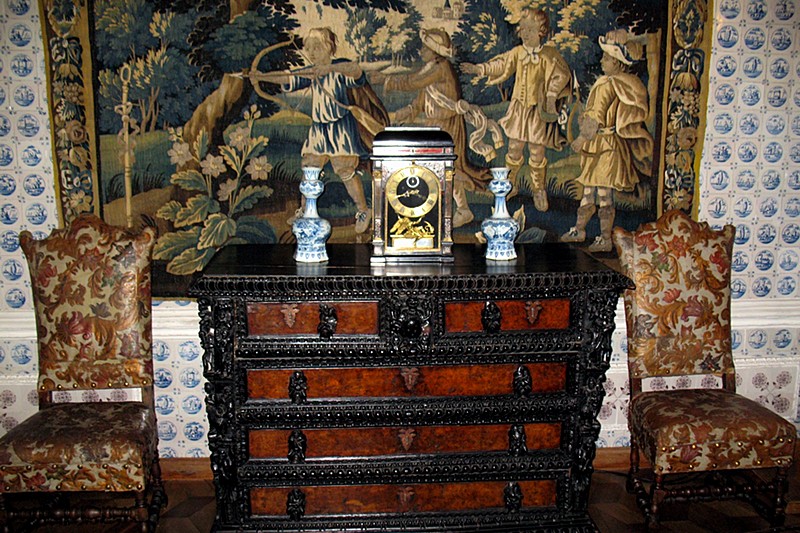
After the arrest of the owner in 1727, the palace was confiscated and handed over to the Office of Foreign Affairs. It then became home to the First Cadet Corps, the most prestigious high school in Russia, where many of Russia's greatest statesmen and military leaders were educated. A museum devoted to the history of the school was established here in the 1880's, and functioned until 1924. Restoration work began on the Palace in 1967, and the public rooms were filled with exhibits from the Hermitage collection. The museum was opened to the public in 1981.
| Address: | 15, Universitetskaya Naberezhnaya |
|---|---|
| Metro: | Vasileostrovskaya |
| Open: | Daily 10:30am to 6pm. Last admission is at 5:30pm. Wednesday, till 9pm. Last admission is at 8:30pm. |
| Closed: | Monday |
| Telephone: | +7 (812) 323-1112 |
| Admission: | Adults: RUB 300.00. Students/children: free. Free admission to all visitors on the first Thursday of each month. |
| Accessibility note: | Sorry, this museum is not wheelchair accessible. |

